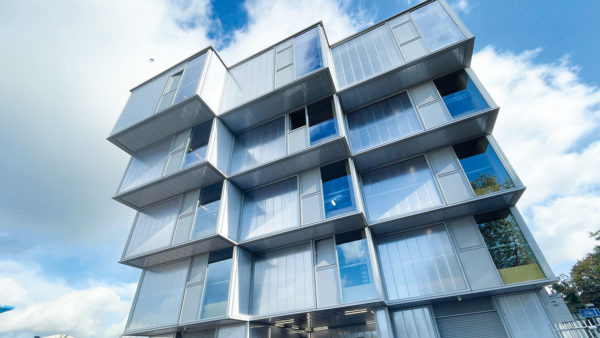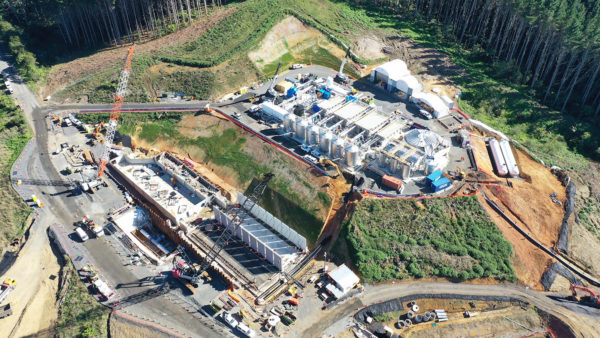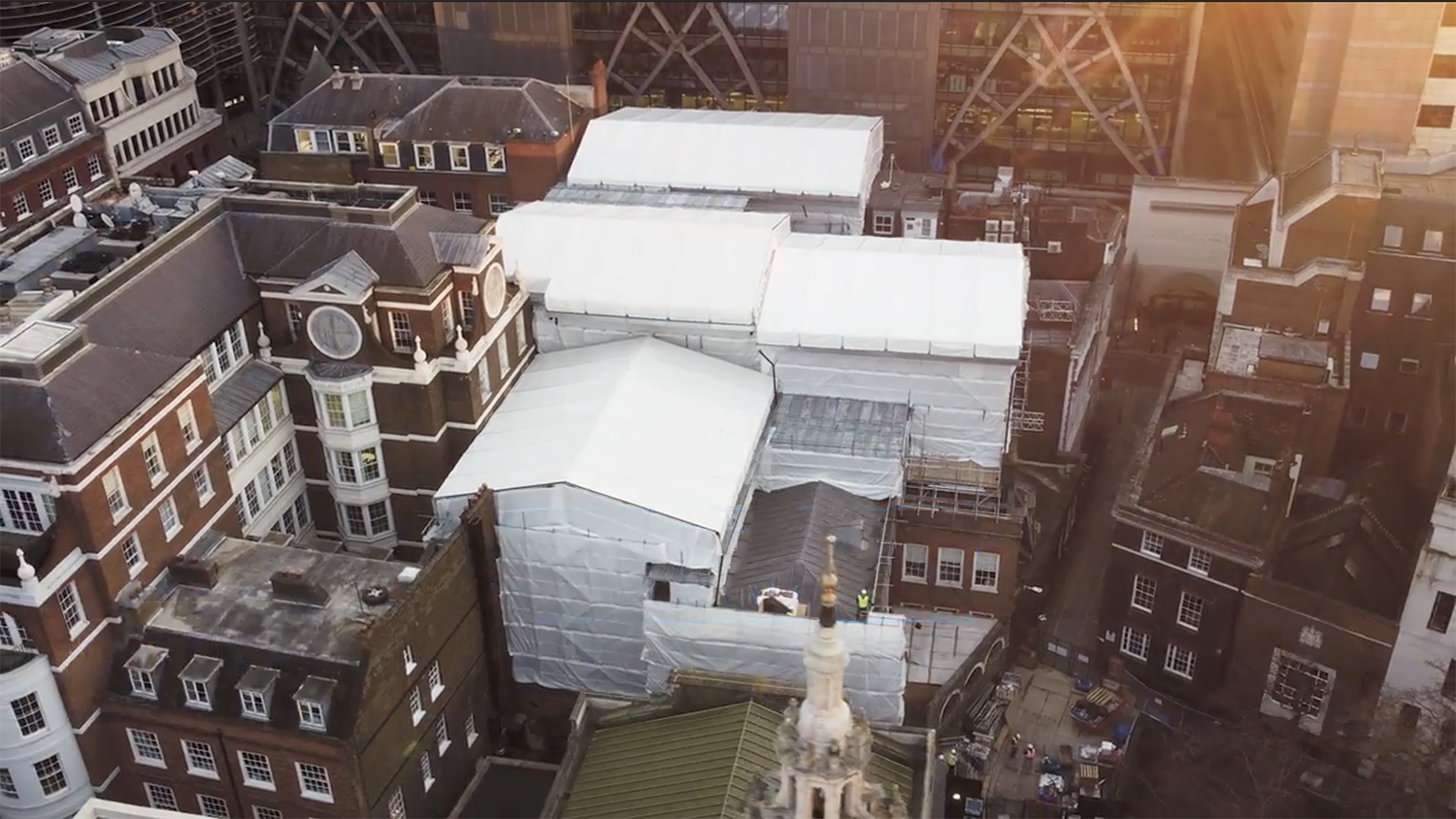
Restoring and modernising historic buildings in the City of London poses a multitude of heritage and access challenges, as Kristina Smith finds out on a visit to the 17th century Skinners’ Hall.
There has been an exciting discovery in the basement of the Skinners’ Hall: a medieval culvert which once carried the Walbrook River through the City of London.
The river was a major factor in the siting of the Worshipful Company of Skinners here back in the 10th century, perhaps even earlier.
This is both good news and bad news for contractor Rooff which is carrying out a £17m restoration and modernisation contract for the Worshipful Company of Skinners. It was important to locate the culvert and determine its condition so that the position of the piles for a new lift shaft could be set, but the discovery of any element of historical interest triggers a series of actions which aim to record and, where appropriate, conserve what has been found.

Skinners’ Hall – Project details
Client: Worshipful Company of Skinners
Contractor: Rooff
Project manager and cost consultant: Synergy
Architect: 6a Architects
Structural engineer: Price & Myers
Building services: Ritchie+Daffin
Contract: JCT Standard Building Contract with Quantities
Programme: May 2022 – May 2024 (104 weeks)
Skinners’ Hall is a Grade I-listed building, with some of its basement dating from before the Great Fire of London in 1666. It is designated a scheduled ancient monument, which means it has to be treated with respect and care by law. There have been various rebuilds and alterations over the centuries, leaving behind a fascinating record of both building practices through time and the activities of the Skinners.
“This is at a completely different end of the spectrum to new build,” says Karl Patten, project manager at Rooff. “You need to have the correct mindset and appetite.
Ambitious vision
The vision for the project is ambitious: to strip out the clutter internally so that the story of the building is more visible, reclaiming some of the larger spaces, while at the same time improving access, circulation and the energy efficiency of the building.
Over the centuries, the Skinners’ activities have evolved from fur and leather trading to philanthropy and education. Revenues from the building will go towards supporting eight schools, helping disadvantaged young people – and funding the ongoing upkeep and preservation of the Skinners’ Hall complex.
Added to the historic challenges of this project is the location of the hall, close to Cannon Street rail and underground station. Locked in by buildings on two of its sides, access to the Skinners’ site is via an entrance on Dowgate Hill or via a narrow lane, College Street, running along its south side. The only outside area for materials or plant storage is a small courtyard in front of the College Street entrance.
“Logistics was the key to unlocking this project, and it helped us win the contract,” says Rooff development director Steve Drury FCIOB.
Tight working conditions
Through discussions with the City of London Corporation and Transport for London – whose tube line runs beneath the area, leading to loading restrictions for some of the roads – Rooff agreed a route into the site and was allowed to close a short section of College Street for outside working space. However, it was not feasible to use a tower crane due to the requirement for a temporary roof.
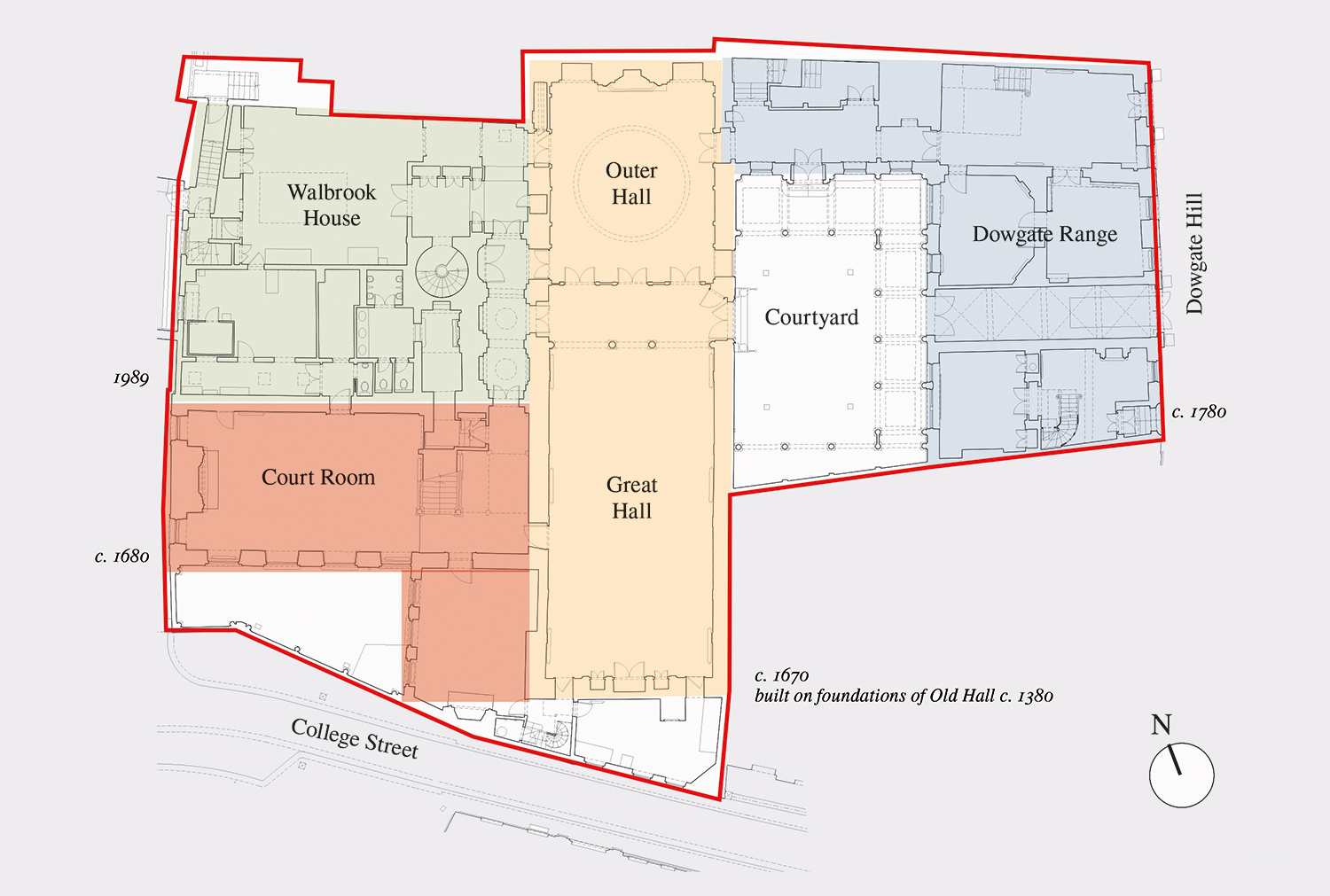
“The building is a scheduled monument. We cannot take the roof off and hope it doesn’t rain,” explains Rooff construction director Tony Pearce. “And if you have a temporary roof, how do you use the tower crane?”
Working with Inner City Scaffolding, Rooff devised an ingenious system for lifting and distributing materials and equipment. A 2,500kg-capacity goods hoist brings materials up to roof level, which is boarded out from roof to roof. The whole site is covered in a temporary roof, with a 1 tonne-capacity lifting beam slung underneath the Haki roof cassettes to move materials around.
Four projects in one
There are four main buildings in the Skinners’ Hall complex, all different ages (see plan above). The Great Hall and Outer Hall were completed by 1672. The Court Room was built around 1680 and the Dowgate Range 100 years later. Finally, Walbrook House was added in 1989.
As well as more event space, the new layouts, designed by 6a Architects, will mean improved member areas, staff accommodation and new offices. Works to improve accessibility include the installation of four new Atlantic Blue limestone staircases, all cantilevered.
A fifth building, linking Dowgate Range and Outer Hall, was damaged during bombing in the Second World War. Rooff will replace its top two storeys with offices and accommodation. That building, with its new sawtooth roof, will provide a backdrop to the renewed Courtyard. New roofs and walls are generously packed with wood fibre insulation, which isn’t possible for the existing fabric due to its Grade-I listed status.
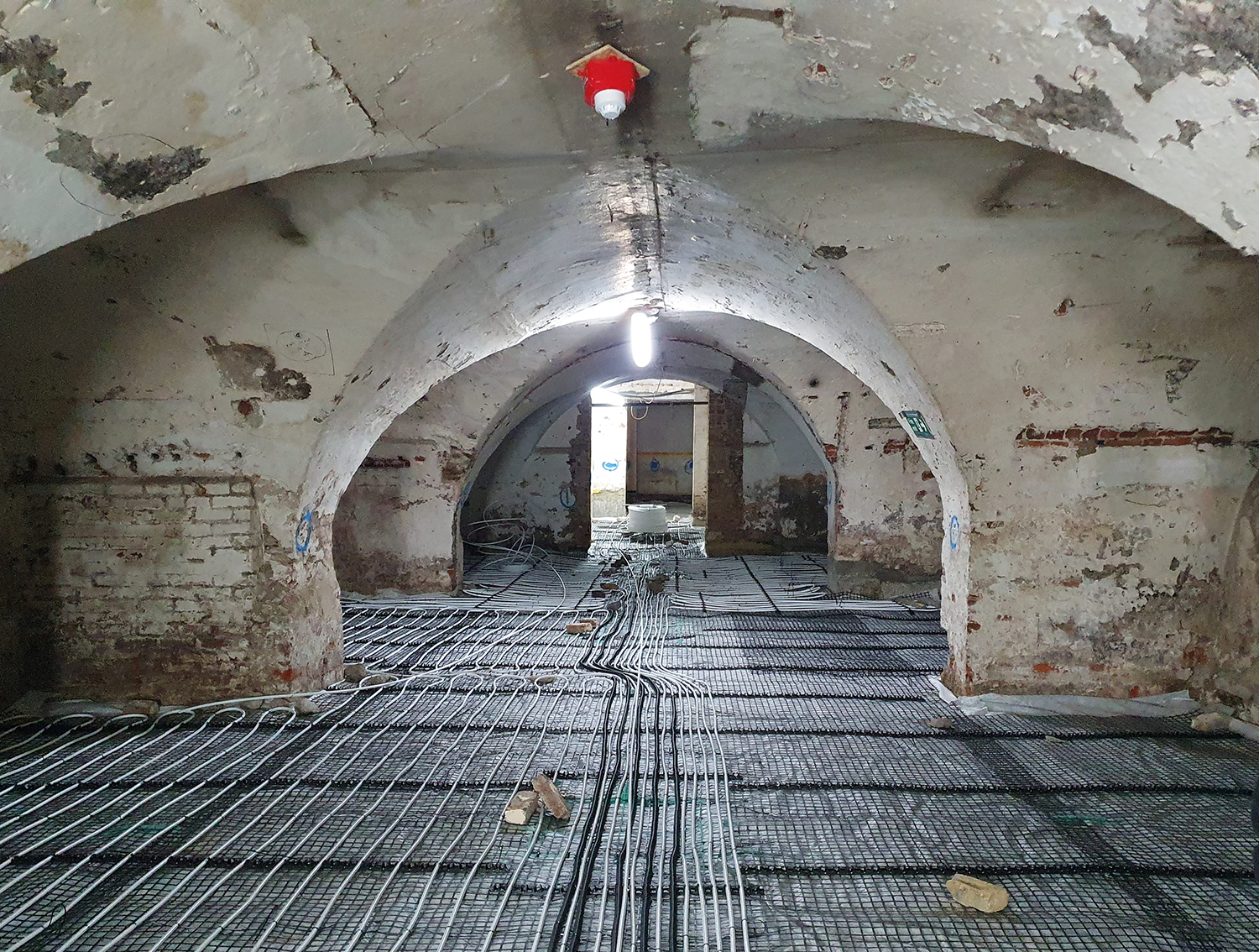
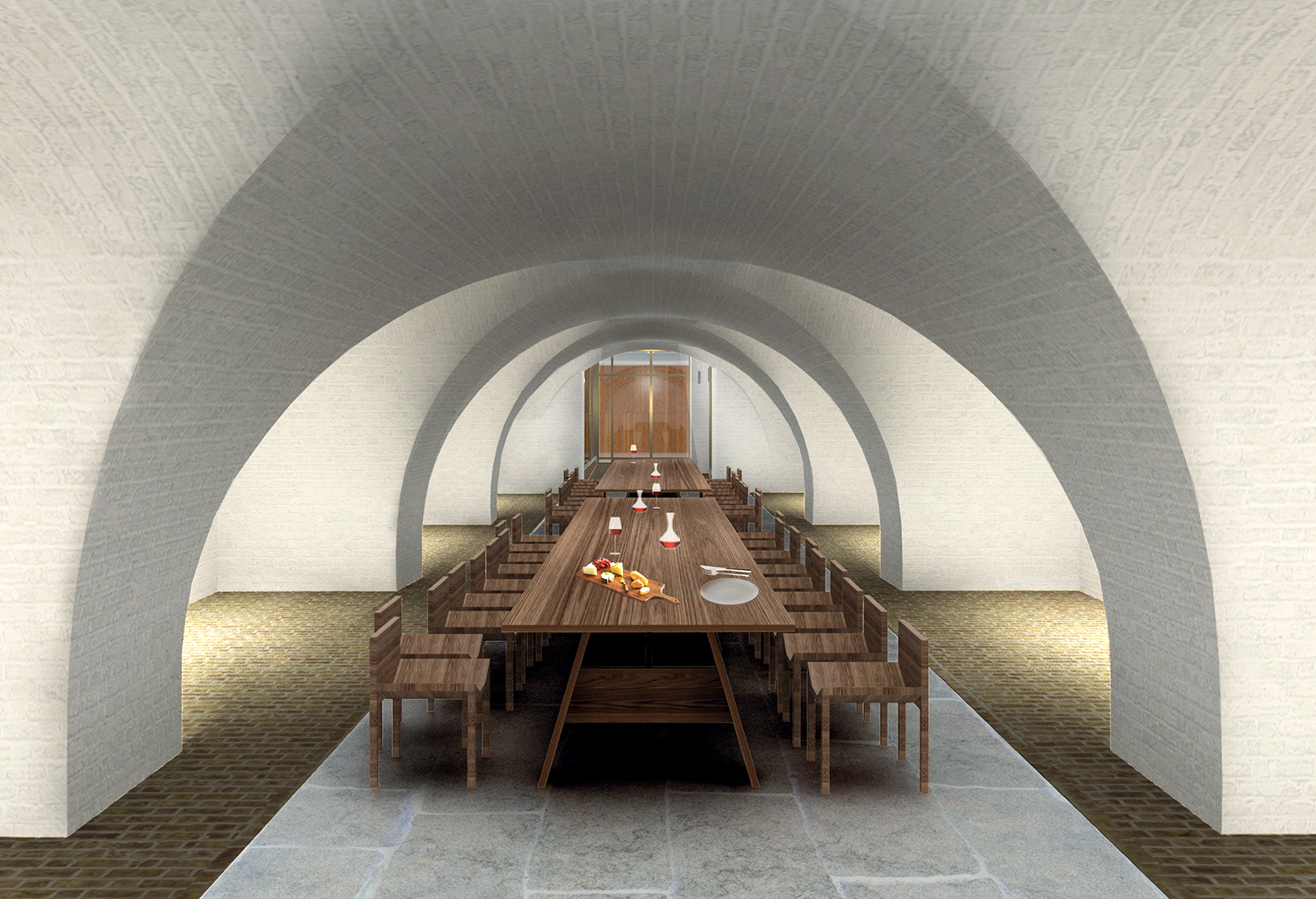
The vaulted basement, with ancient stone double and quatro vaults, was used for storage until now. This is being reinvented to provide a historic dining area.
The upgrade in energy efficiency will see gas banished from the buildings and replaced by air source heat pumps. Fireplaces and chimneys will be repurposed as inlets and outlets for fresh air, with new cables, ductwork, pipes sensitively threaded into the fabric of the old buildings.
Building through time
Walking round the site with Pearce is like a having a mini masterclass in building. (How many readers are familiar with a bressummer beam, for example?). Pearce pored over the 600 drawings that came with the tender, 450 of them architectural, and he seems to have them all stored in his head. He frequently peels off to consult with tradespeople.
In the basement, the juxtaposition of old and new, conservation and energy transformation is very evident. Beneath the vaulted ceilings, two operatives are laying down underfloor heating. Pearce pulls back a geotextile sheet to reveal a 120mm layer of insulating recycled glass aggregate, with the pipes to be encapsulated in a limecrete floor.
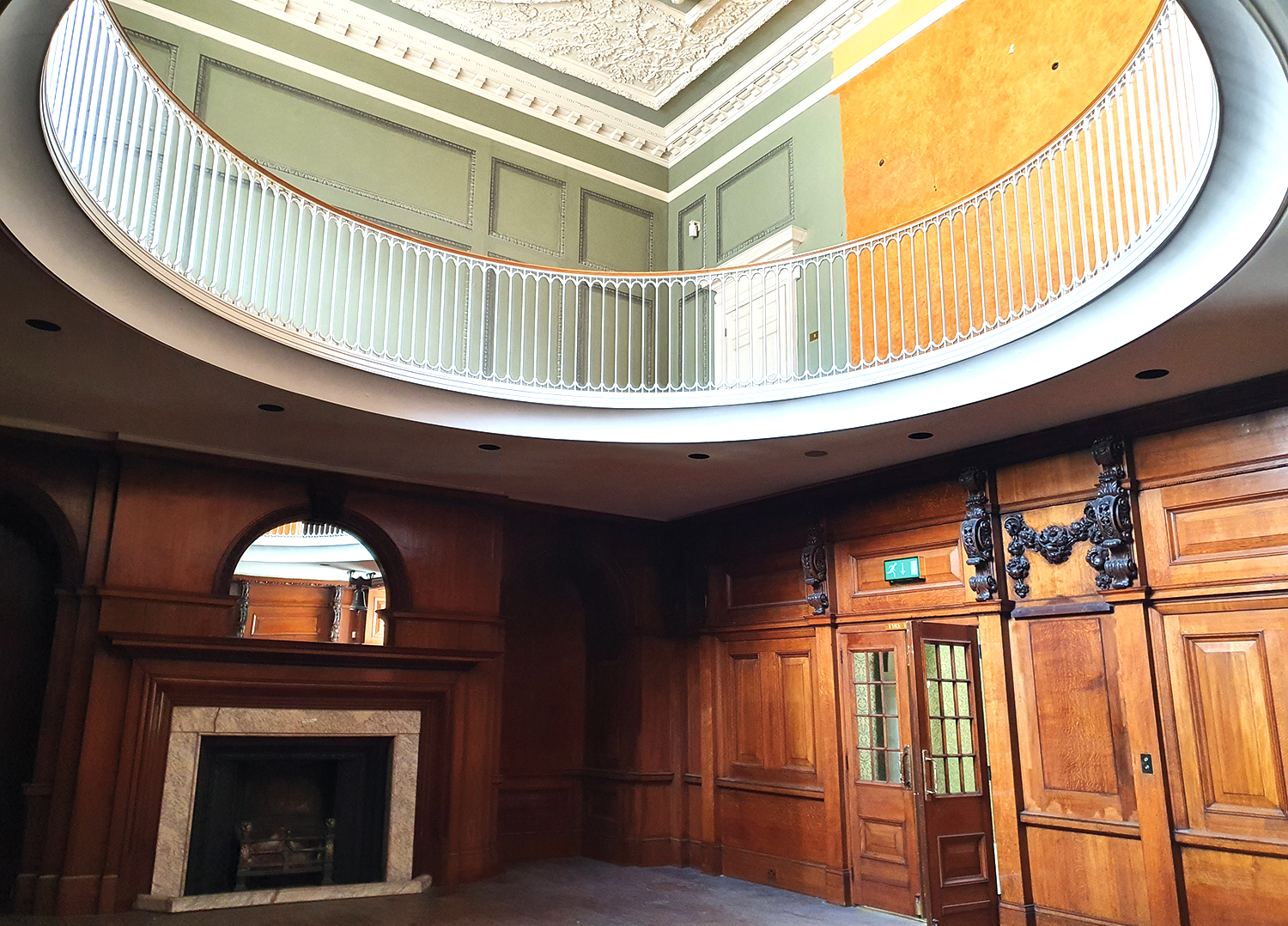
Rooff started on site in May 2022. Installing the temporary roof and its supporting scaffolding took five months. The contractor has also stripped out partitions and other additions made mostly in the 20th century.
“Our brief was to get back to the bare bones but work like this cannot just be done over a few weeks,” explains Patten. “We have to observe what we are finding, report to the architect who then reports to the heritage consultant and Historic England.”
MOLA (Museum of London Archaeology) has a watching brief. On the day of CM’s visit, MOLA senior archaeologist David Sankey was observing as an operative painstakingly stitch-drilled through slabs of concrete laid in the 1980s close to the Walbrook culvert.
“The culvert carried the stream which ran just north of the city wall at Moorgate,” explains Sankey. “By the late Middle Ages a lot of it was in culverts, so this is a late medieval culvert and very fragile.”
Testing existing piles
Rooff removed a 1980s staircase to expose the culvert. A new lift shaft will go in, requiring a mini piling rig to be painstakingly manoeuvred into the space. Before that happens, Rooff needs to test the capacity of the existing piles. And before that can happen, there are more potential archaeological findings to be investigated.

The laying of the limecrete floor was scheduled for the day after our visit to allow the piling rig to be brought in. But now things are on hold, while decisions are taken on the conservation of the culvert and further archaeological investigations take place.
Meanwhile, up at roof level, courtesy of the scaffold, ongoing works to the various roofs can be viewed. The tiles from part of the Dowgate Range roof have been taken off, a breathable membrane and battens installed with the old tiles piled up, ready to be reinstalled. At the north end of the range, carpenters are working on the opening for an elliptical rooflight which sits over the historic staircase.
Single-glazed Georgian wire glass must be replaced with curved double-glazed panes, which Pearce explains are “very unusual”.
The roof of the Great Hall will also be renewed. But the Outer Hall’s pitched roof will be transformed to a flat one and used to house plant, including the air source heat pumps, shielded from view by a screen which will also limit noise. With an ornate plaster ceiling beneath, this has been a major engineering feat, involving the transfer of the ceiling support from timbers to a new steel frame. A second frame installed above that takes the weight of the plant.
Juggling act
On a job like Skinners’ Hall, it is a juggling act for Rooff to keep the project moving forward so there is enough work for their subcontractors. “We don’t want too many interruptions to workflow because you need to keep the labour on site,” explains Drury.
Changes in programme, such as those related to the Walbrook culvert, have knock-on effects elsewhere. They also mean that material deliveries build up, all stored within the building alongside historic elements such as the floorboards, which have each been carefully numbered and stacked.
Patten enjoys the works though. “We are proud that we are one of the few remaining old-school building contractors,” he says.
Long careers at Rooff
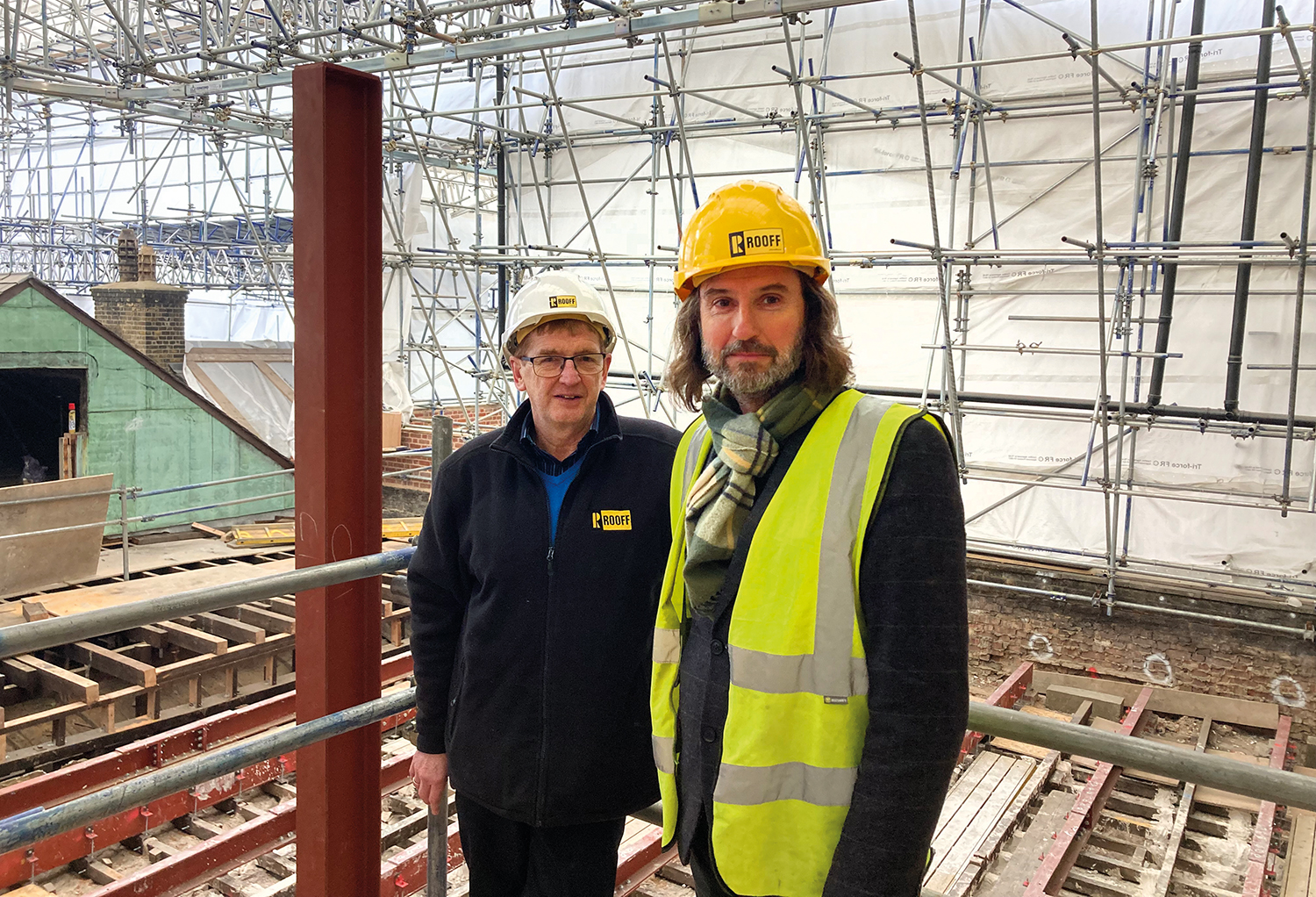
Rooff’s development director Steve Drury FCIOB and its construction director Tony Pearce both joined the company in 1985. Project lead Karl Patten joined the company 13 years later and, bar a very short spell with another contractor, has been there ever since, gaining a degree in Design and Construction Management while working.
“It sounds corny to say, but it is like being in a family working here,” says Patten. “It’s not just about getting a pay cheque every month.”
It’s fair to say that all three of them love heritage work. Drury cut his teeth on projects such as Skinners’ Hall as a trainee surveyor and describes himself as an “amateur historian”. Pearce is a construction enthusiast who likes to get his teeth into technical challenges. And Patten gets a kick out of the complexities of a heritage refurbishment.




